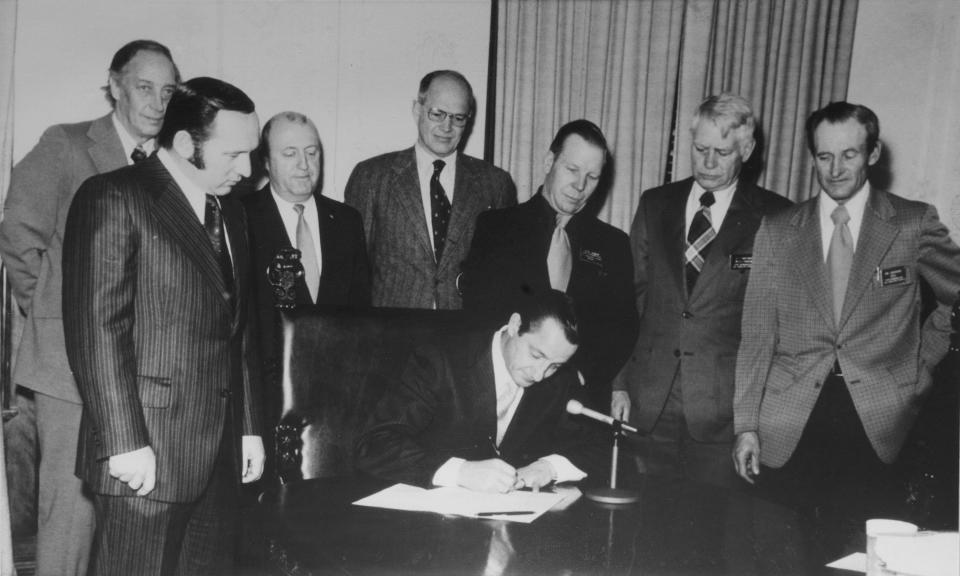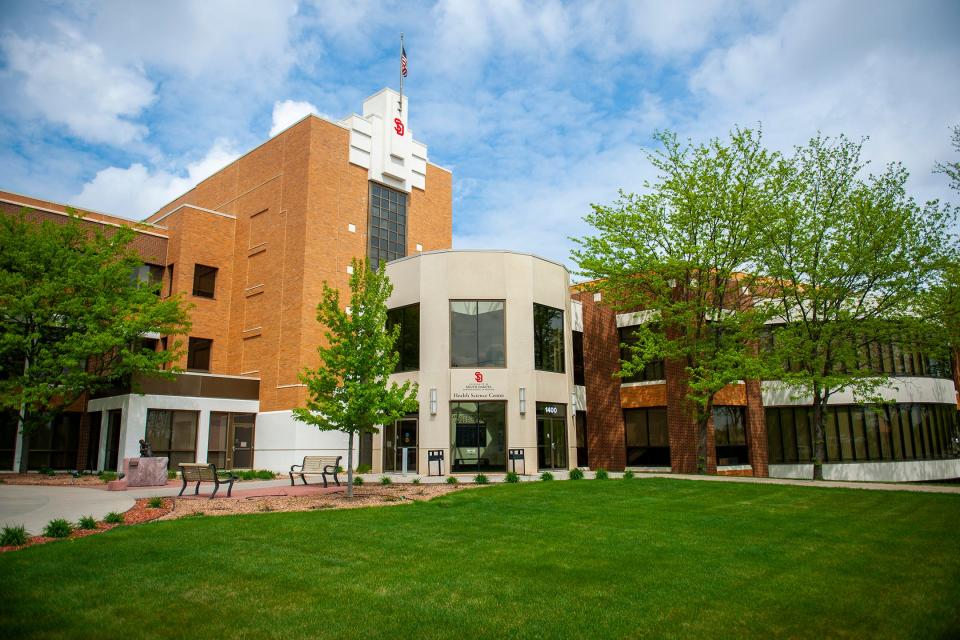USD School of Medicine celebrates 50 years of granting doctor of medicine degrees
It’s been 50 years since the University of South Dakota’s medical school became a four-year, doctor of medicine degree-granting institution.
The anniversary is important to school leaders and medical professionals, who say USD’s Sanford School of Medicine has had a substantial impact on patients, health care systems and communities in the state in a major way.
“Cutting-edge medical care is being delivered from South Dakota,” Dean Dr. Tim Ridgway said. “If we did not have a university medical school, this would not look near the way it looks today.”
During 50 years, the school has conferred thousands of medical degrees and impacted every corner of the state through health care, research and education, USD said in a press release.
‘Single-biggest factor in the growth and development of Sioux Falls’
While the school has operated since 1907, it only granted two-year degrees for its first 67 years in operation, meaning medical students would have to transfer out-of-state to finish their M.D.
By the late 1960s and early 1970s, it became more difficult for USD students to transfer to other states for their third and fourth years of M.D. education because of politics and educational demands in neighboring states, said Ted Muenster, former USD Foundation president and chief of staff to former Gov. Richard Kneip.
More: Health providers across the US call this Sioux Falls facility for help
The state was faced with finding some permanent transfer situation with another institution that would take all of South Dakota’s students, Muenster explained.
A Dec. 3, 1973 article by Tom Graves, on the front page of the Argus Leader, highlighted a shortage of doctors and added an impetus to the four-year medical school efforts. Seventeen of South Dakota’s 66 counties didn’t have a physician then.
More: Legislators seek health care workforce report to address impending shortage
At the time, School of Medicine Dean Dr. Karl Wegner estimated there was one physician per 1,110 residents of the state, and said the state had the worst physician-to-patient ratio in the nation.
Ridgway estimates back then, about 18-20% of students would return to South Dakota to practice after finishing their M.D.
That all changed in 1974 when the South Dakota Legislature passed Senate Bill 30 to create a family practice-oriented four-year M.D. degree-granting USD School of Medicine with an appropriation of $1,295,291.

Then-Senator Harvey Wollman and Wegner were both instrumental in passing that legislation, Ridgway and Muenster noted, as they assembled a task force and traversed the state working with physicians and legislators to get support for the bill. Muenster said Wegner also “gave up a lucrative private practice and took a pay cut” to be the school's first dean.
If SB 30 hadn’t passed into law in 1974, the landscape of healthcare in South Dakota “would look a whole lot different,” Ridgway said. “It has made a huge impact in delivering better care.”
Wegner suggested using pre-existing hospital facilities in Sioux Falls, Yankton and Rapid City as clinical training sites. With those partnerships in place, the medical school graduated its first class of 39 physicians by 1977.
“In my opinion, the four-year medical school has been the single-biggest factor in the growth and development of Sioux Falls in the last 50 years,” Muenster said. “Much of that would have never happened without the medical school. Before, people would have to go to the Mayo Clinic in Rochester to get what they can now get in Sioux Falls.”
USD School of Medicine builds ‘dedication to the area’
The 50th anniversary reflects the longevity of the School of Medicine’s impact in the area, 2023 graduate Dr. Meghan Grassel said.
“Our graduates come back and practice here, and are being taught by graduates of the medical school,” said Grassel, a family medicine resident at the Center for Family Medicine in Sioux Falls. “It builds dedication to the area and generational knowledge.”

In stark contrast to its beginnings, now, 75% of School of Medicine graduates who complete their residency in South Dakota stay in the state to practice medicine, according to USD.
More than 2,000 physicians in South Dakota teach the medical students each year, and the school's sponsors, or is affiliated with, nine residency and four fellowship programs, according to USD.
The school’s recently-created Frontier and Rural Medicine (FARM) program, which places 13 medical students in eight rural South Dakota communities each year, has produced 65 physicians. Ridgway said the program puts the SOM at the forefront of rural health care education.
More: USD launches new 24/7 mental health support line, Coyote Care
Grassel added the School of Medicine helps graduates make the decision to go back to rural areas across the state, and that the FARM program in particular makes graduates fall in love with rural South Dakota.
In Grassel’s experience, what sets the school apart from schools in other states is that it’s more hands-on. It let her get involved with medicine early on in her education. It’s built relationships with health care professionals all over the state, and faculty support students and graduates at all stages of their career.
“There are a ton of excellent graduates who have gone on to be leaders, wherever they end up,” Grassel said. “(USD has) lots of great role models who are still excited about medicine. It’s not just their 8-to-5, but their calling.”
This article originally appeared on Sioux Falls Argus Leader: USD School of Medicine celebrates 50 years granting M.D. degrees

